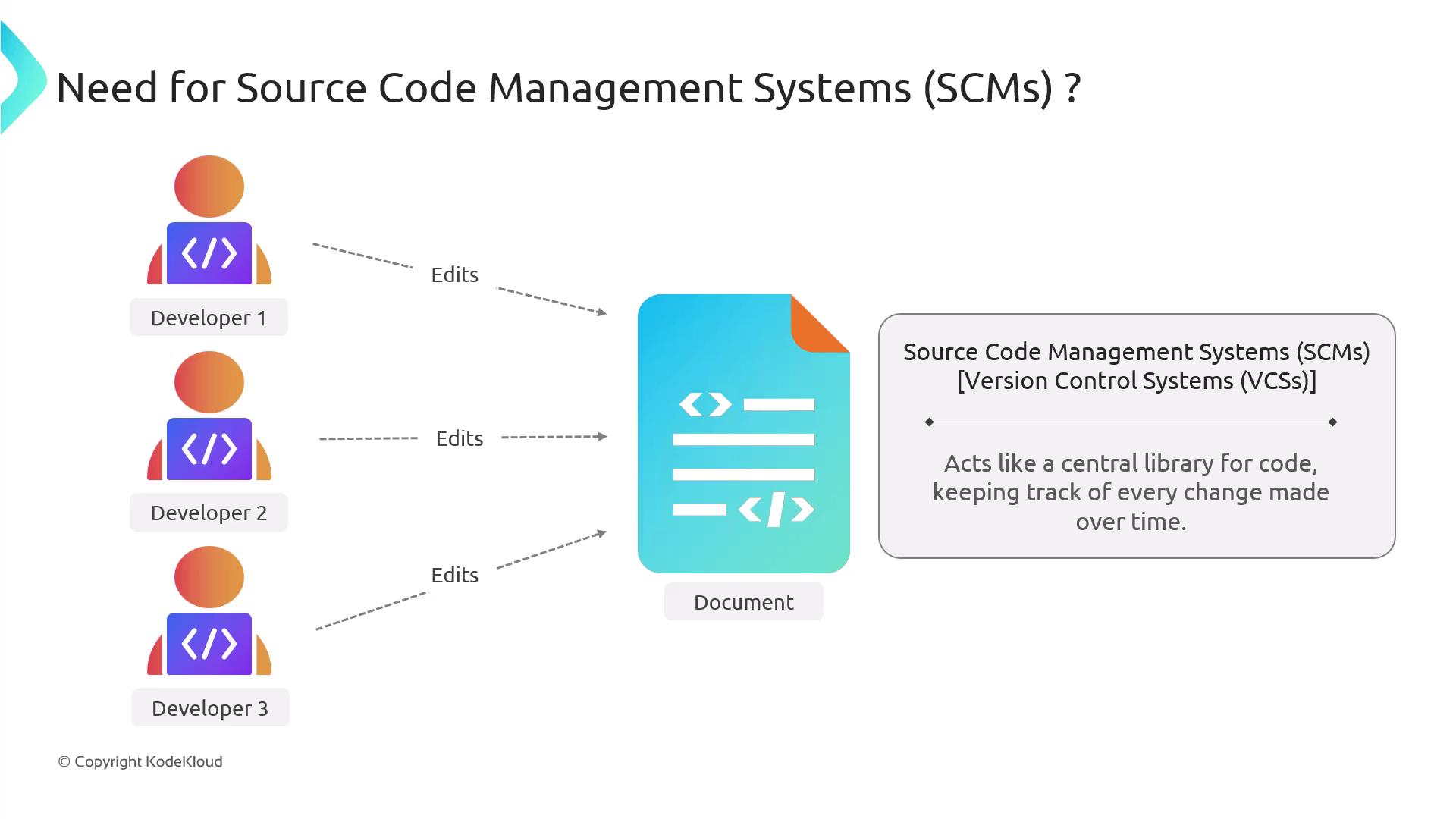Certified Jenkins Engineer
Introduction and Basics
Basics of SCM
Source Code Management (SCM), also known as version control, is the backbone of collaborative software development. Without an SCM, teams face chaotic workflows, untraceable edits, and endless merge conflicts.

Why Use an SCM?
An SCM system stores every change to your codebase in a central repository, allowing multiple developers to work in parallel. Key benefits include:
| Feature | Benefit |
|---|---|
| Real-time Collaboration | Developers push and pull changes simultaneously |
| Code Review | Comment on pull requests before merging |
| Conflict Resolution | Detect and resolve edit conflicts efficiently |
| Secure Sharing | Grant controlled access to internal and external contributors |
| Full Change History | Audit decisions and review past code versions |
| Rollback Capability | Revert to stable versions when issues arise |

Note
Consistent, descriptive commit messages make it easier to track your project’s evolution over time.
Example: git commit -m "Fix authentication bug in login flow"
Popular SCM Platforms
Most modern SCMs are built on Git, a distributed version control system. Below is a comparison of common cloud-based and self-hosted solutions:
| Platform | Type | Hosting Model | URL |
|---|---|---|---|
| GitHub | Git | Cloud | https://github.com |
| GitLab | Git | Cloud/Self-hosted | https://gitlab.com |
| Bitbucket | Git, Mercurial | Cloud | https://bitbucket.org |
| Gitea | Git | Self-hosted | https://gitea.io |
| Gogs | Git | Self-hosted | https://gogs.io |
Getting Started
# Clone a repository
git clone https://github.com/example/repo.git
# Create and switch to a new branch
git checkout -b feature/new-endpoint
# Add files to staging area
git add .
# Commit changes with a message
git commit -m "Add new endpoint for user data"
# Push branch to remote
git push origin feature/new-endpoint
Links and References
Watch Video
Watch video content